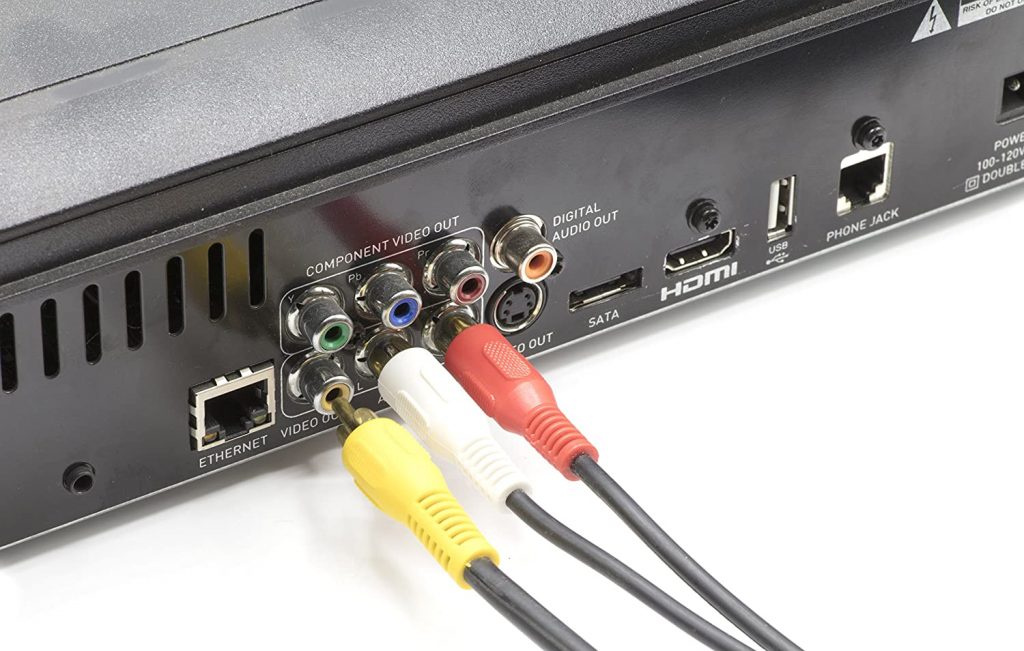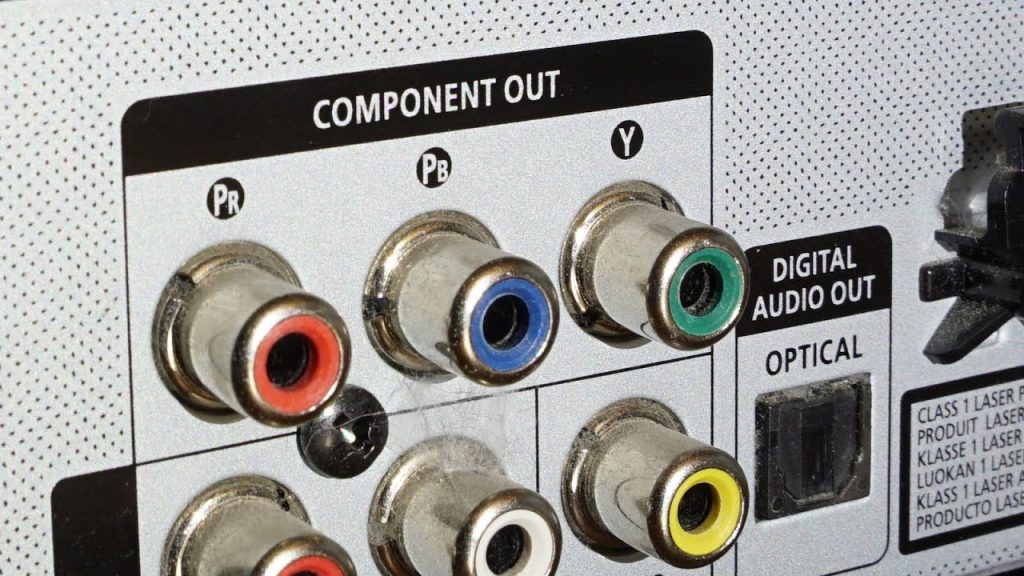Inputs that are older and are used less frequently are no longer a priority when new connection options become available for televisions and other home entertainment technology. As a consequence, they become less in number, combine into fewer entities, or vanish entirely, impacting the vast majority of LCD and OLED TVs in addition to other home entertainment devices.
There are no longer any connections for S-Video or DVI, and only a few component videos and composite video ports are available. Composite and component video connections are increasingly being combined into a single video input option on newer models of televisions.
The manufacturers use the term “shared connection” to refer to this configuration. And that’s what this article is about. I’ll explain to you about the component video, specifically what is a component video input.

What Is a Component Video Input?
Component video is a video signal divided into multiple transmissions to improve quality. It is typical in analog video transmission and is frequently used with an auxiliary audio stream. Although this can occasionally vary, the components of component video streams typically contain chroma (color) or luma (light) information.
Three independent “RCA type” connectors and cables with red, blue, and green connecting tips link to corresponding inputs or outputs with the same colors to form a component video connection.
The connections on equipment having component video inputs and outputs may also be marked with the letters “Y”, “Pb”, “Pr”, or “Y”, “Cb”, and “Cr”. These initials signify that the red and blue cables transmit the video signal’s color information. The black and white, or “luminance”, portion of the video signal, on the other hand, travels along the green cable.
The video component is adaptable. Although cable connections only transmit analog video, they are technically capable of transmitting resolutions up to 1080p. They may also transmit either interlaced or progressive video signals, giving them greater capabilities than composite video connections.
How Does Component Video Work
Component video is an analog format divided into two or more distinct channels to produce a better image than a single-channel composite video signal.
Because of this stringent specification, there are other types of component video, including s-video (divided into two independent channels) and YPbPr and RGB (which have three). A YPbPr signal is a component of video in consumer audio-visual products.
Read more: What Color Is the Video Cable?
Parts of YPbPr
- Y – brightness (luma), and the RCA port is green
- Pb – the distinction between blue and luma, and the RCA port is blue
- Pr – differences between red and luma, and the RCA port is red

Why You Should Use Component Video Input?
This is the next best video connection after a port that supports HDMI and a connector that supports DVI. For this reason, if you have a device that does not support HDMI or DVI, you should try connecting it via the component connectors instead.
Certain individuals assert that the appearance of a picture transmitted over an analog component video connection rather than digital HDMI is to their liking. In most circumstances, there is probably not much difference between them if the equipment and cabling are of sufficient quality.
However, as display devices improve their resolutions, you will most likely become more aware of the distinction between them. If you have the option, it is recommended that you use a digital connection rather than an analog one. However, you should experiment with both to determine which works best for you.
Types of Component Video Inputs
There isn’t technically a component cable. Simply stating “composite video using an RCA or VGA plug” would be less confusing. But now that people are used to it, the composite cable is used. Still, it is best to know the many connector types that a component video cable could include.
VGA
The RGBHV (Red-Green-Blue-Horizontal-sync-Vertical-sync) or 15-pin VGA connector is frequently used in RGBHV connections. As long as the devices have a component video signal setup, this connector can also transmit component video. When used in component video applications, the signal is carried via the first, second, and third pins. Then, the grounds are the sixth, seventh, and eighth signals.
BNC
BNC connectors are also occasionally used in component video connections. It is frequently used in high-end or professional consumer electronics. BNC connectors are “bayonet-style” because they engage similarly to a bayonet placed on a rifle. Twist the connector after plugging it in to make the pins lock.
No matter what kind of connector you choose to use in a component video connection, think about how it will hold up over time. Select a connector that you believe can withstand frequent disconnections and reconnections. For durability and oxidation resistance, it would also be advisable to use a cable with a solid grip and non-corrosive plating.
RCA
You are already familiar with this one. Radio Corporation of America, the first business to create this connector, is known as RCA. RCA was initially used to transmit audio from phonographs to radios before switching to transmit visual data. Given that you may use it for composite and component video, it is the most used connector form.
Also read: What Kind of HDMI Do I Need for 4K?
Conclusion
Some connect component videos use the many free cables lying around the house from previous equipment purchases. Remember that normal cables are red and white in color. Therefore it is important to match the green, red, and blue jacks on both pieces of equipment with the same wire.
Different configurations of component video cables are available. The three cables might be joined or ribboned together, or they could be covered in a single sheath with triple tails on each end. It is also possible to use three single RCA or coaxial wires, but they must be the same size and type.
The price will increase as cable length and quality, tips, and shielding improve. Hopefully, this article has helped you understand what is a component video input. Now you have the information you need.